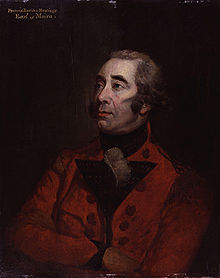| Commander-in-Chief, India | |
|---|---|
| Status | Senior-most officer of the Indian Army |
| Reports to | Governor-General of India |
| Residence | Flagstaff House |
| Seat | GHQ India |
| Term length | No fixed term |
| First holder | Major general Stringer Lawrence[citation needed] |
| Final holder | FM Sir Claude Auchinleck |
| Abolished | 15 August 1947 |
| Succession | Commanders-in-Chief of the Indian Army and Pakistan Army |
| Unofficial names | Commander-in-Chief in or of India |
During the period of the Company and Crown rule in India, the Commander-in-Chief, India (often "Commander-in-Chief in or of India") was the supreme commander of the Indian Army from 1833 to 1947. The Commander-in-Chief and most of his staff were based at GHQ India, and liaised with the civilian Governor-General of India. Following the Partition of India in 1947 and the creation of the independent dominions of India and Pakistan, the post was abolished. It was briefly replaced by the position of Supreme Commander of India and Pakistan before the role was abolished in November 1948.[1] Subsequently, the role of Commander-in-Chief was merged into the offices of the Commanders-in-Chief of the independent Indian Army and Pakistan Army, respectively, before becoming part of the office of the President of India from 1950 and of the Commander-in-Chief of the Pakistan Army from 1947.
Prior to independence, the official residence was the Flagstaff House, which later became the residence of the first Prime Minister of India; as Teen Murti Bhavan (Teen Murti House), it is now a museum.
This is a list of people who were the military Commander-in-Chief, India until 1947. The rank and title are the final ones for the officer's career and not necessarily applicable to his tenure as Commander-in-Chief in India.
P.R. Cadell wrote an article correcting and elaborating on the early commanders-in-chief of the East India Company's forces in the Journal of the Society for Army Historical Research in 1944.[2]
- ^ Warner (1982), p. 269
- ^ Cadell 1944.
